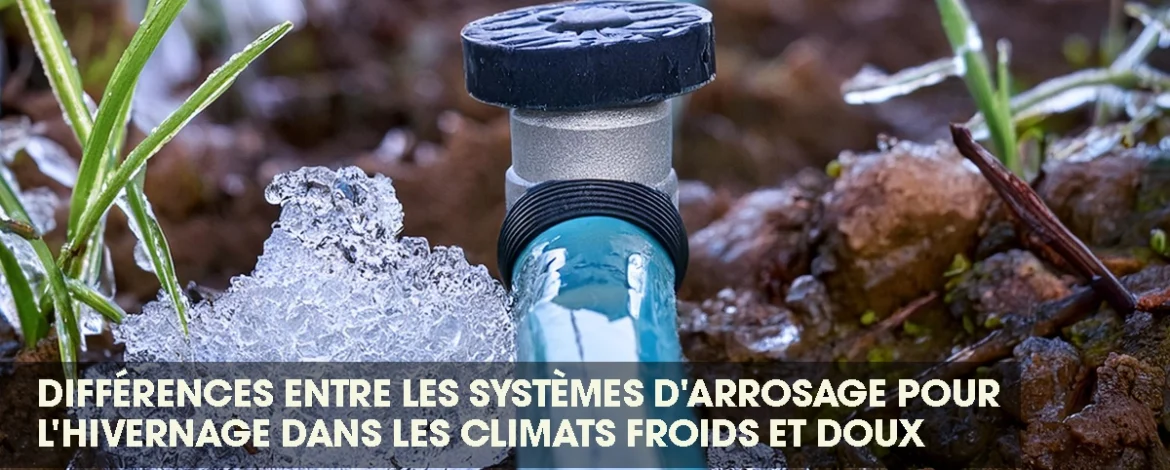Winterizing irrigation systems requires different approaches depending on the climate. Proper winterization ensures your system stays functional and damage-free, regardless of the weather. This article covers the steps for winterizing systems in both cold and mild climates, with a focus on automatic irrigation and drainage systems. These services have become essential due to the recent increase in rainfall.
Key Winterization Differences
In cold climates, freezing temperatures make winterization crucial. If done improperly, frozen pipes and burst lines can lead to costly repairs. A key step is removing all water from the system using compressed air, a process known as a blowout. This method prevents water from freezing and expanding within the pipes.
In mild climates, winterization may be less intensive but is still necessary. Temperatures can drop below freezing at times, putting irrigation systems at risk. Instead of a full blowout, draining the system or using automatic drain valves might suffice. These valves release water when the pressure drops, stopping pipes from freezing.
Regardless of climate, it’s important to inspect systems for leaks and other issues during winterization. This addresses any wear and tear before winter, especially as heavy rains have increased.
Winterization in Cold Climates
In freezing regions, the blowout method is the most effective for protecting irrigation systems:
- Preventing Pipe Damage: Leftover water in pipes can freeze, expand, and cause bursting. A blowout removes all water from pipes, valves, and sprinkler heads.
- Protecting Backflow Preventers: Backflow preventers, essential to irrigation systems, must be removed or insulated in cold climates to avoid freezing.
- Sealing the System: After blowing out the system, shut off the water supply and cover exposed components to protect them during winter.
With the recent rise in rainfall, proper winterization prevents waterlogging and overflows in cold climates.
Winterization in Mild Climates
In milder regions, winterizing irrigation systems involves less effort but remains crucial for long-term system health:
- Partial Drainage: While freezing risks are lower, partial drainage of main lines can protect pipes during sudden cold snaps.
- Drain Valves: Installing automatic drain valves prevents water from building up by releasing excess when the system is off.
- Regular Maintenance: System inspections for leaks and drainage efficiency are critical, especially with the recent increase in rainfall.
The Role of Drainage Systems
Drainage systems are essential in both cold and mild climates. As rainfall increases, well-functioning drainage systems protect your property by preventing water from pooling. Without proper drainage, systems may struggle with excess rain during winter months.
At Vaquam, we specialize in installing automated irrigation and drainage systems to safeguard your property year-round. Whether you face freezing winters or milder conditions, we offer expert services tailored to your needs.
Winterizing your irrigation system is a must in any climate. Though the methods differ, the goal is the same—protecting your system from damage and ensuring efficiency when spring comes. Vaquam provides top-notch automatic irrigation and drainage solutions to keep your property safe, especially during this period of increased rainfall. Don’t wait—get your system winterized today.
At Vaquam, we offer complete winterizing services for your irrigation system, ensuring it remains in peak condition throughout the colder months. Our winterization process follows all local regulations and provincial laws in cities like Montreal, Terrebonne, Brossard, Laval, Longueuil, Candiac, and Roussillon, safeguarding both your system and the surrounding community from potential winter damage.


